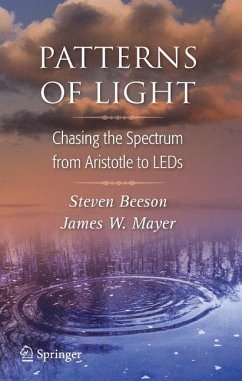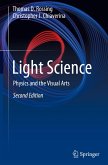Light is all around us. Vision is our dominant sense, and we are richly rewarded with a palette of colors from red to violet. Our eyes do not detect the l- energy, long-wavelength infrared (IR) radiation, but we know it exists from d- cussions of war applications and televised images of guided weapons targets. Our eyes do not detect the higher-energy (above visible light energies) and shorter-than-visible-wavelength ultraviolet radiation, and yet we know it is there from the sunburn we receive in Arizona. We also know that window glass can block ultraviolet rays so we don't get a burn while driving with the windows rolled up. We know about radio waves from the little boxes that talk to us and x-rays from the dentist office. These waves and rays belong to the same family of light, often called photons (from the Greek photos, light), that describes the spectra of electromagnetic radiation over 10 orders of magnitude from very low-energy - dio waves to very high-energy x-rays and gamma rays.
From the reviews:
"In this work, which developed out of a general studies course at the university, Beeson and Mayer (both, Arizona State Univ.) present a descriptive overview of the nature of light and fundamental phenomena associated with its behavior. ... The brief, nontechnical chapters are geared to the nonscientist and emphasize phenomena. The book includes excellent illustrations (with some color photos) and a glossary of terms. Summing Up: Recommended. General readers." (O. Eknoyan, CHOICE, Vol. 45 (11), 2008)
"In this work, which developed out of a general studies course at the university, Beeson and Mayer (both, Arizona State Univ.) present a descriptive overview of the nature of light and fundamental phenomena associated with its behavior. ... The brief, nontechnical chapters are geared to the nonscientist and emphasize phenomena. The book includes excellent illustrations (with some color photos) and a glossary of terms. Summing Up: Recommended. General readers." (O. Eknoyan, CHOICE, Vol. 45 (11), 2008)








